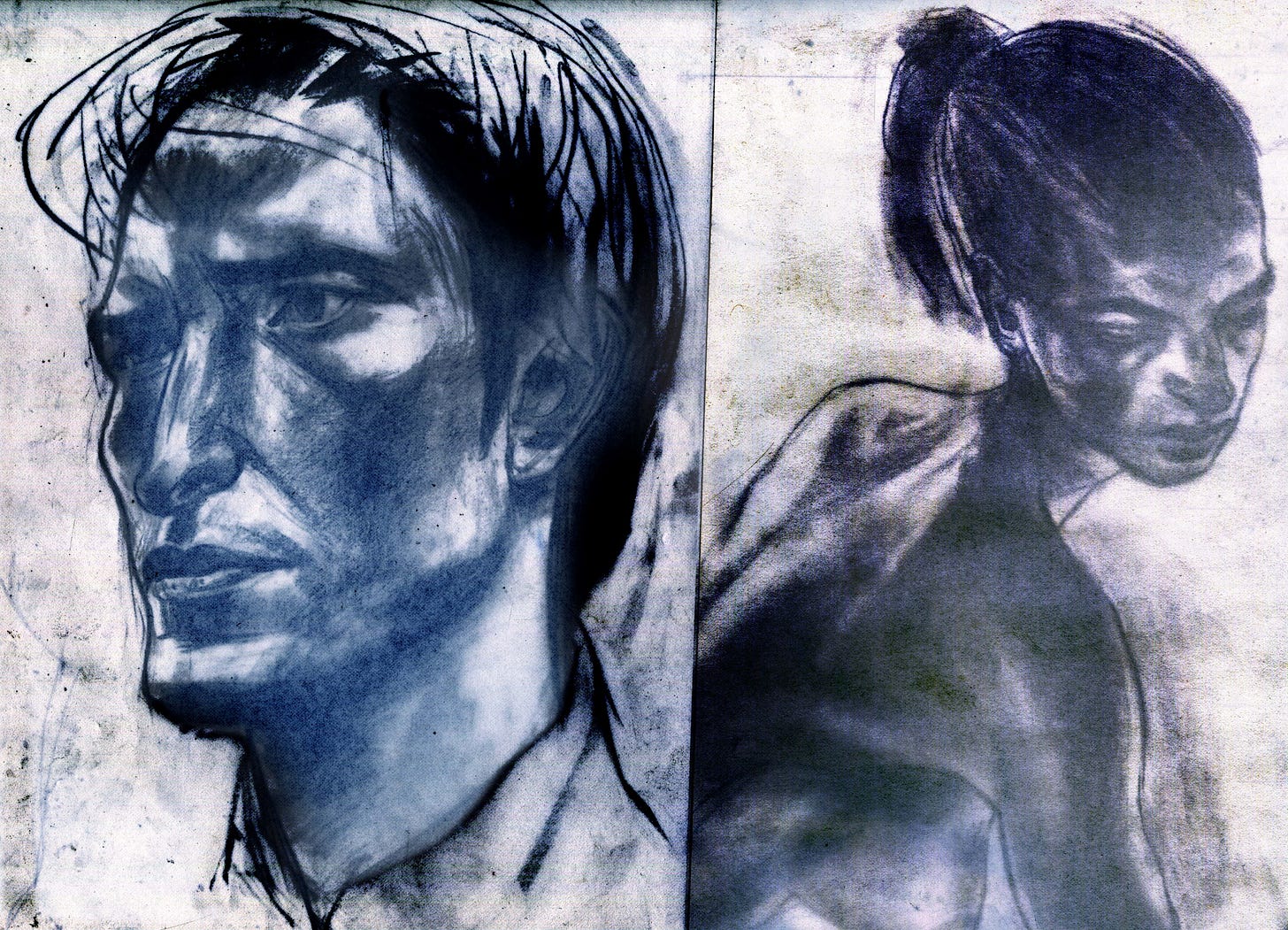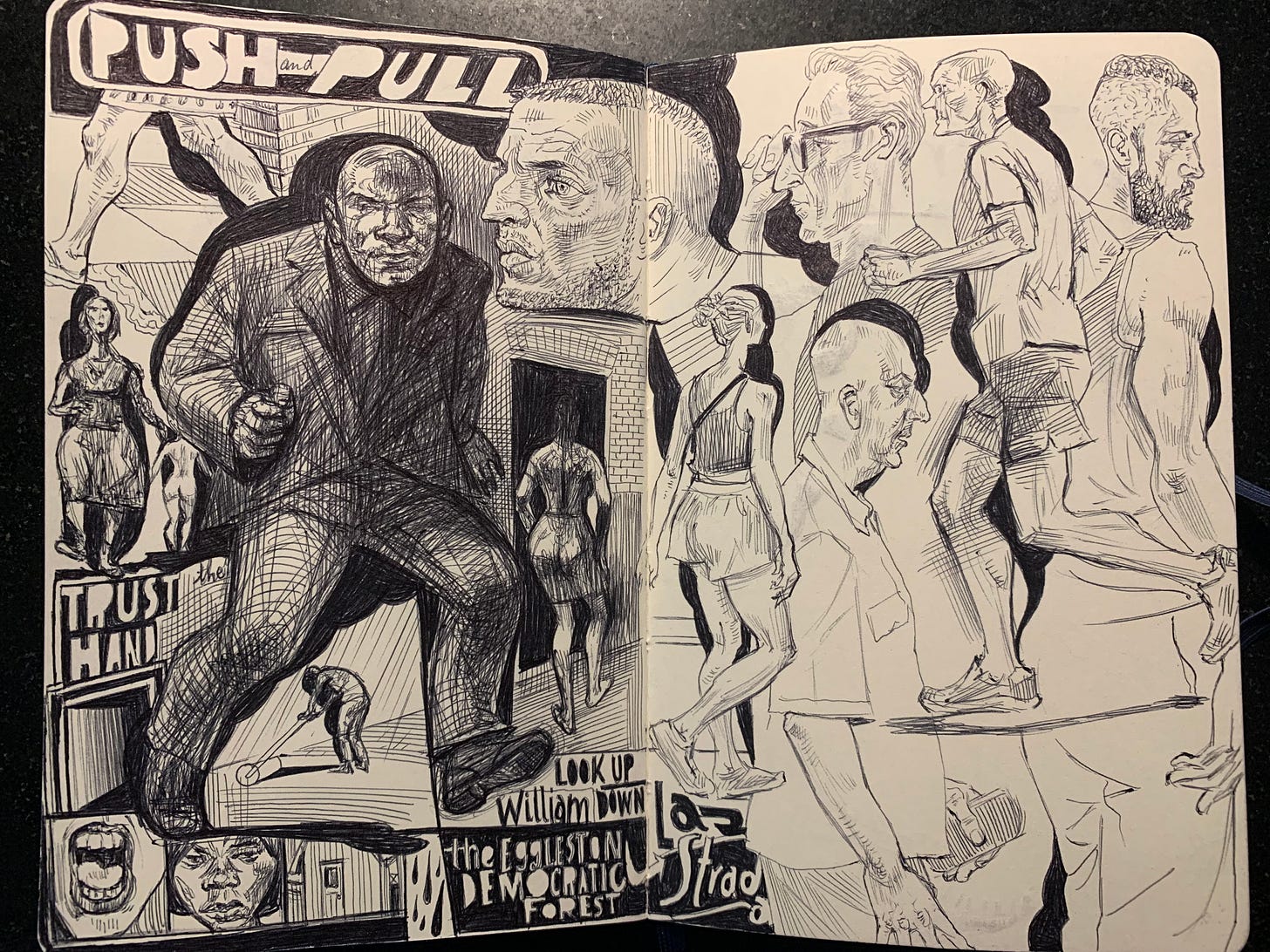We are story telling beings and we live in stories of our own telling. Narrative inspires, informs, entertains and persuades us. It can offer us meaningful connection to each other and escape from the world. But with stories all around us we lose the thread of their deeper meaning. Like the young fish in David Foster Wallace’s 2005 commencement address at Kenyon College,
There are these two young fish swimming along and they happen to meet an older fish swimming the other way, who nods at them and says “Morning, boys. How’s the water?” And the two young fish swim on for a bit, and then eventually one of them looks over at the other and goes “What the hell is water?”
A story has a coherence, an order of the telling. It makes a difference how we tell a story. If I tell you, ‘A pail up the hill of Jack and went to fetch Jill water.’ We have all the words and none of the meaning of, ‘Jack and Jill went up the hill to fetch a pail of water.’ In visual storytelling this nonsense example of jumbled words is much too apt.
Visual storytelling has the same need of coherence. Visualize an image or series of images for DFW’s This Is Water. We could even conjure the page turn brilliance of Jon Klassen in the final perplexed exclamation of the young fish. The accessibility of digital tools and their opportunity to lay down a hard carapace of pixels has us polishing the surface and missing the depth in our This Is Water image. A shiny surface it is too, as we slide our plastic pencil against glass to conjure the water our fish are arrayed across.
A visual story has a similar need to follow how it is told and the artful surface of a glittering fish is likely the last thing we should worry about, but the first thing we care about as it bumps against our eyes. It’s like we are writing all the verbs first and begrudgingly add a noun. The composition and the simple abstract language of using shape and form with scale, placement and direction to express meaning is a hard sell when satisfaction is found in the certainty of a copied dark shadow jackhammering an edge.
We had a talk on Friday from the comic book artist Michael Walsh. He talked about the constant problem-solving of visual storytelling and how difficult it is. The writer offers words for us to imagine worlds and the artist has to bring those world’s into focus along with all those details of flora and fauna. But we mustn’t get lost in the weeds of the narrative, we need to explore uncertainty and the utter joy in solving the problem of the blank page.







